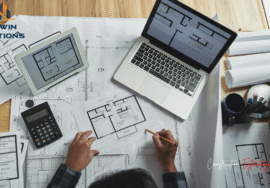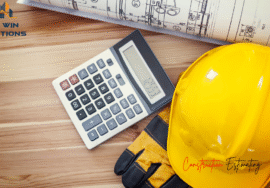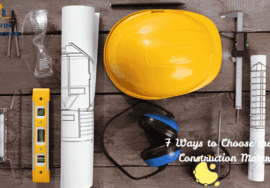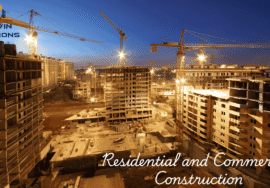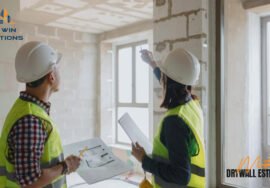
What Is Commercial Construction & Its Types?
Construction is a big deal when it comes to creating our surroundings. Within this huge construction universe, we have this entity called Commercial Construction that focuses on the design, building, and remodeling of those structures that are specifically meant for businesses.
When you think of commercial construction, it includes everything from office buildings and shopping malls to hospitals and hotels. Indeed, construction of commercial buildings plays a huge role in the economy by building spaces that enable businesses to thrive. Here, we learn in-depth what commercial construction is, its stages, and the projects that fall under it.
Understanding Commercial Construction
First, let’s explore what is commercial construction? It is simply a question of developing buildings for business rather than residential use. In contrast to residential construction focused on those buildings where people live, commercial construction focuses on those facilities that are occupied by businesses, government agencies, and public institutions.
The scale of projects in this industry can truly vary. You can see small renovations being finished on local coffee shops or see huge corporate campuses or massive industrial parks being constructed. No matter if we’re talking about a small coffee shop, school, or large hotel, the common goal is to construct facilities that help businesses operate and provide for the public.
Key Characteristics of Commercial Building
- Business Oriented: The complexes are developed to earn revenue or provide other facilities to the general public.
- Regulations and Ordinances: Stringent zoning, construction, fire, and environmental regulations must be complied with.
- Larger Plans and Budgets: Commercial developments will have bigger budgets and longer durations than residential construction and require careful planning.
- Group Work: They typically have plenty of various individuals contributing to get them finished, such as architects, engineers, contractors, cost estimators, and clients.
The Commercial Construction Process
Before we talk about the various types of commercial construction, let’s talk about how a typical project is accomplished:
❖ Planning and Design:
This is where the conceptualizing is done. The team moves through the ground, decides whether or not the project is feasible, and comes up with the architectural designs. They also permit and do cost estimates.
❖ Pre-Construction:
This is the phase of getting the right people on board, finishing the deals, and placing orders. Site preparation and permitting are also part of the gigantic tasks here.
❖ Construction Stage:
Then the actual construction comes finally! It includes footing work, erecting the structure, installing the roof, plumbing, air conditioning and heating, and electrical fixtures. Quality control and coordination become extremely important in this phase.
❖ Post-Construction:
The staff performs the last checks and testing after the construction. If the building is inspected and certified by inspectors, it’s handed over to the owner to occupy. The stage can also entail warranty jobs and setting up maintenance contracts.

Types of the Commercial Construction
Commercial construction can be divided into types based on how the buildings will be used. Following is a rundown of some common types:
- Hospitality Construction: Hotels, resorts, and convention centers are included in this category. A lot of the focus here is on creating a great guest experience, with designer aesthetics and luxury amenities.
- Retail and Shopping Complexes: Your run-of-the-mill shops, malls, and supermarkets are in this category. The building needs to be pleasing to the eye in order to draw customers in while being efficiently laid out internally.
- Office Buildings: This category includes corporate offices and co-working spaces. These buildings are likely to reflect the company’s environment and must be able to house different types of workers.
- Industrial Construction: Think warehouses and factories. Here, functionality, safety, and efficiency are prioritized over aesthetics.
- Healthcare Facilities: Clinics and hospitals fall under this category. These buildings must comply with rigorous health and safety standards to be suitable for patients and staff.
- Educational Institutions: Schools and universities are also part of commercial construction. These buildings must be sturdy and versatile for educational use.
- Government and Public Sector Buildings: These are the town halls and police stations, typically financed by tax money, and more likely than not, under a microscope.
- Mixed-Use Buildings: These are projects that combine several functions in one facility—such as retail at ground level, offices in the upper levels, and even apartments.
The Importance of the Commercial Building
Commercial development is not just about putting up structures; it is a powerful source of economic development, job creation, and provision of essential services that allow towns and cities to grow. Here is why it matters:
- Economic Contribution: It creates hundreds of jobs and boosts the local economy as materials and services are typically sourced locally.
- City Growth: Such developments reshape city skylines and improve community facilities.
- Innovation: New office buildings typically have the latest technology and materials to be more energy efficient and eco-friendly.
- Investment Potential: Commercial property is an excellent investment since it will be inclined to offer stable returns in the long term.
Challenges in Commercial Construction
Though commercial construction has a lot of positives working in its behalf, there may be some bumpy times along the way, such as:
Cost Overruns: From time to time, unexpected expenses come about due to material price changes or changes in design.
Delays: Weather, labor conflicts, and permits all have the potential to lead to delays.
Regulatory Maze: It is probable to be complicated to navigate all the permits and inspections necessary.
Safety Issues: Ensuring that all is compliant with health and safety standards is the most important aspect.
To succeed, a commercial building project requires astute project management, seasoned contractors, and open communication between all stakeholders.
Final Thoughts: Commercial Construction
Commercial building is an important part of our infrastructure that reflects what society requires. Hospitals, hotels, and the rest, the buildings are a reflection of the aspiration and values of the societies in which they are built.
If you’re going to be undertaking a commercial build project, you need to be dealing with competent engineers, architects, project managers, as well as contractors to have your vision realized from design phases to completion when the building’s done.





